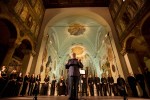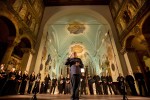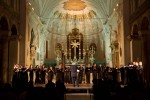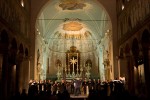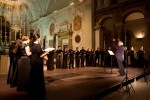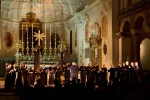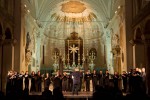Ravenna Festival

Musica e guerra: Novecento ferito
Pace sulla terra
Black-and-white visions from the war: Casella’s “musical films” for piano four hands alternate the description of marching artillery with images of ruins and wooden crosses, while Debussy’s “caprices” are the composer’s response to the war as mediated by French traditional poets. And if Bartok’s Sonata seems to presage some unresolved conflict, hope for peace comes from Schönberg’s Friede auf Erden (1907), which the author later referred to as “an illusion for mixed choir” (1923), “having believed, when I composed it, that this pure harmony among human beings was conceivable [...] Since then [...] I have seen that peace on Earth is only possible if we take great care over it, as is the case with harmony”. The meditation on peace continues in a verse by Irredentist poet Slataper set to music by Balestracci.



